Michelangelo and the Sistine Ceiling
Michelangelo Buonarroti (1475-1564) painted the ceiling of the Sistine Chapel at Pope Julius II's insistence from 1508 to 1512; he was 33 to 37 years old. The chapel itself is a narrow three-story rectangle with windows at the top level. The ceiling is not flat but curves downward to meet the walls. Above each window a triangle is formed by a rounded horizontal surface. There is a terrific virtual tour on the Vatican website. The fresco on the end wall with the blue background is Michelangelo's much later (1537-1541) The Last Judgment. The arrows locate the three minor and three major panels of the Creation series we will consider.
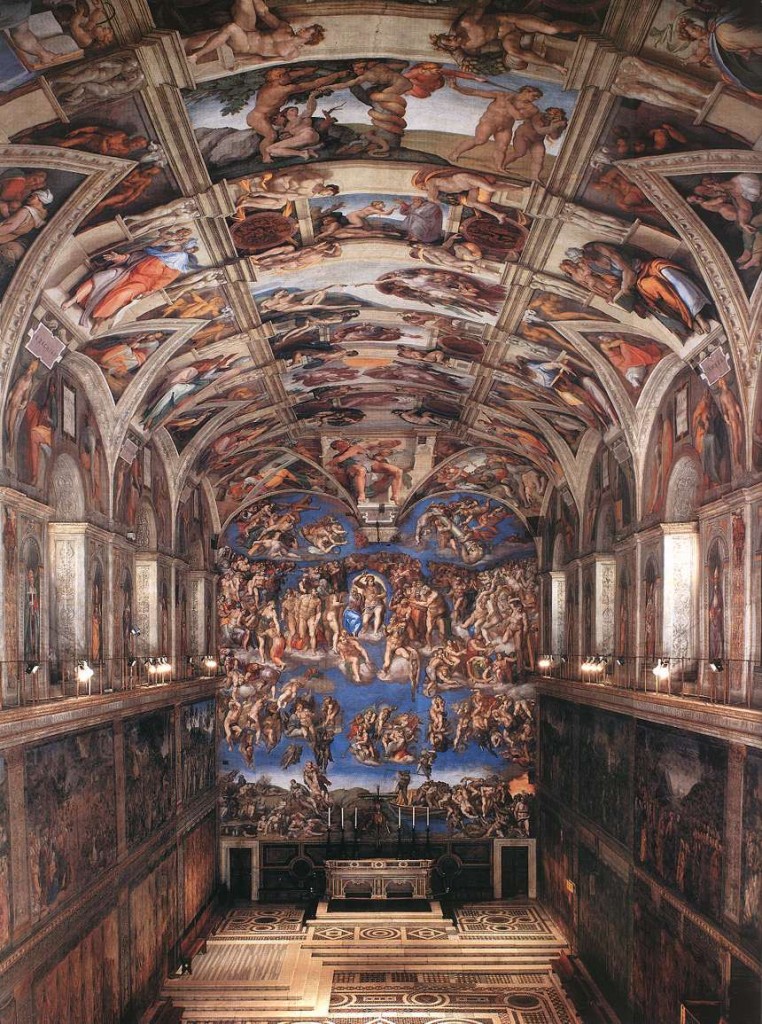
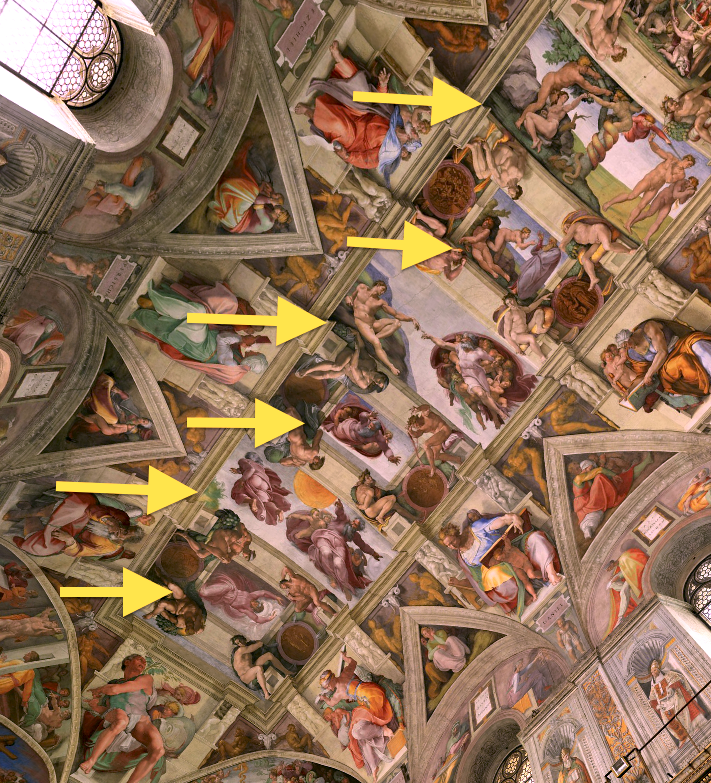
God Divides the Light From the Darkness
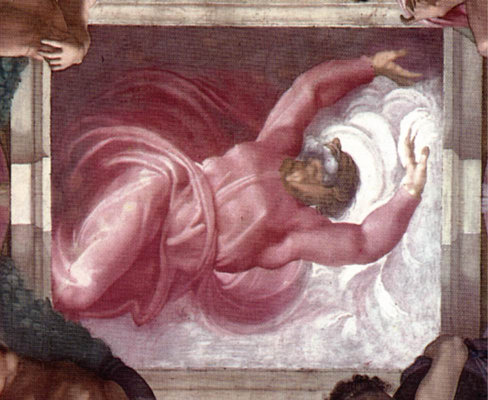
This minor panel which sits immediately in the path of Jonah's raised gaze was painted in a single day.
God Creates the Sun and Moon
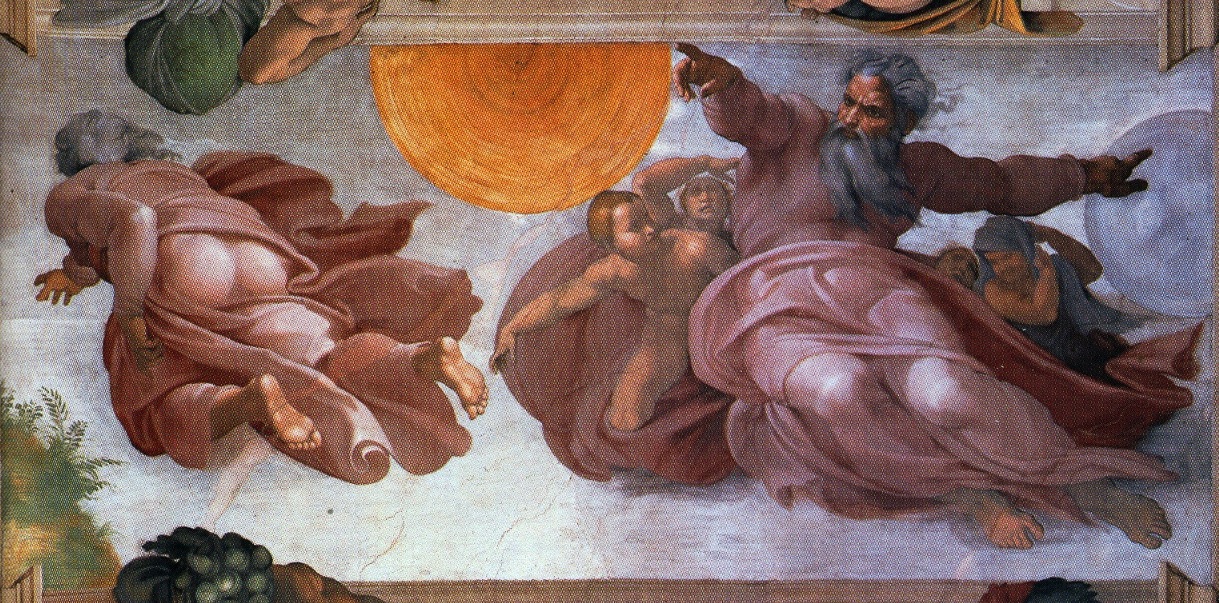
This major panel represents two separate incidents of creation. On the right God is creating the Sun and Moon. To the left, he is creating the plants and trees. This is the first representation in western art of God's undraped tush: could Michelangelo have been expressing his resentment toward Pope Julius?
God Divides the Waters Above from the Waters Below
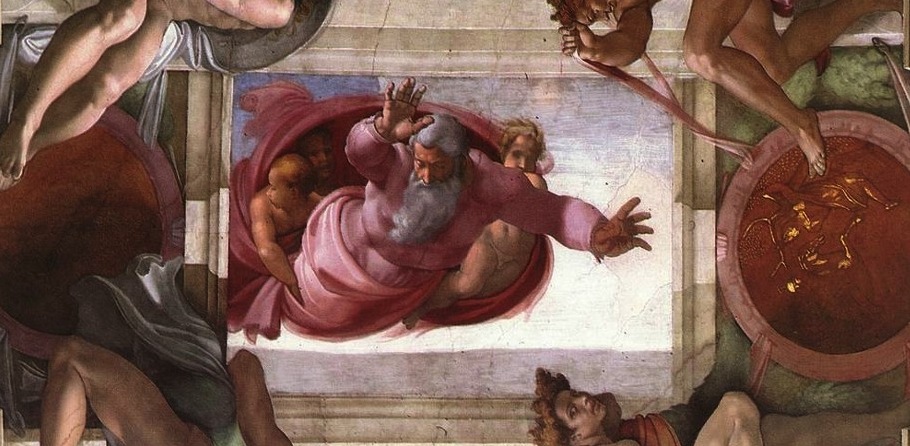
This minor panel would be difficult to interpret were it not for its position in the sequence. This is the final panel to represent portions of the first creation story; the rest are from the second creation story.
The Creation of Adam
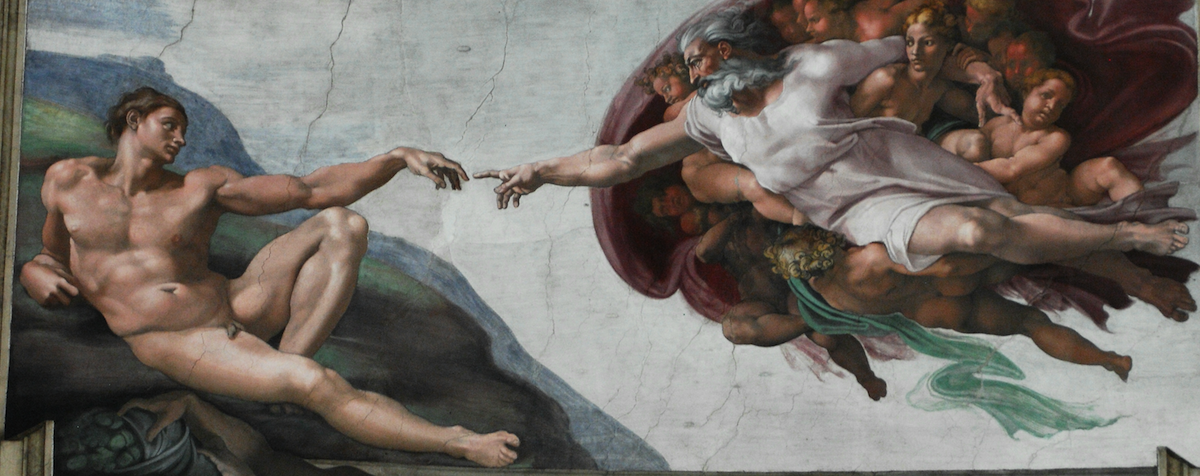
The Creation of Adam is often said to be the best known image in all of western art. But it's not a very accurate portrayal of the scene in Genesis 2. Why not? In the view of some, the figure looking out under God's left arm is Eve. (Not very consistent with the storyline in Genesis 2.)
The Creation of Eve

This unexciting scene reproduces a relief panel in Bologna which Michelangelo studied when he was young.
The Temptation and the Fall
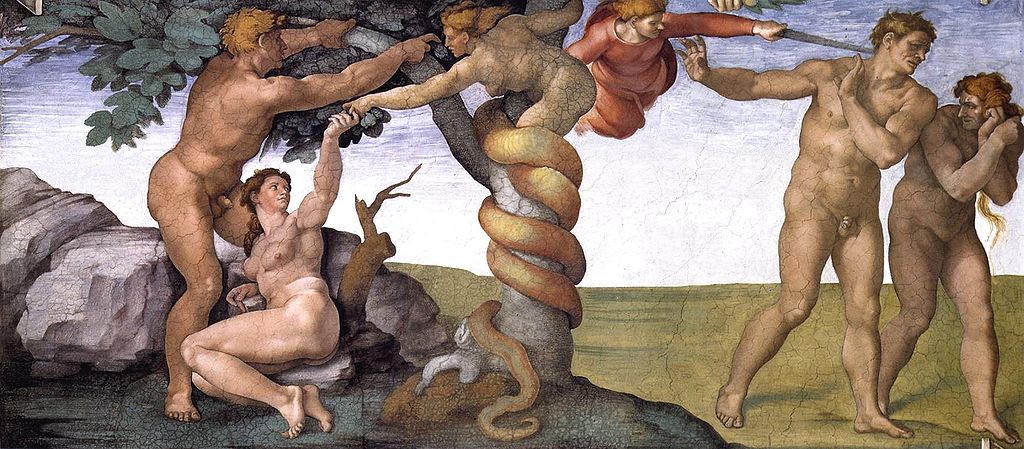
As with the third panel, this one portrays two scenes. On the left Eve receives the fruit from the hand of the snake (represented, as was common, with the upper body of a woman) and Adam picks his own fruit. On the right, an angel forces them out of the garden. Aside from the woman's body aspect, what's wrong with the portrayal of the snake? (We won't even go near the question of what Adam and Eve were doing before the snake came along. Michelangelo must have been really angry with Pope Julius at this point.)
Just One More Thing: Durer
Adam and Eve
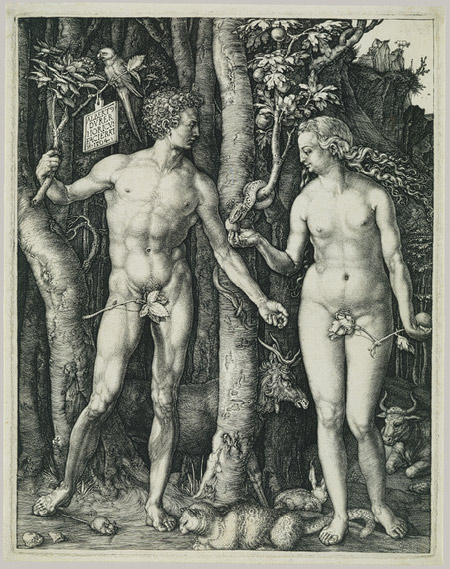
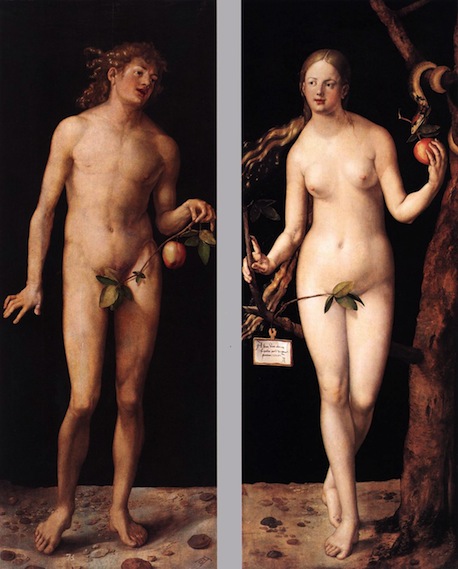
This engraving (1504) and these life-size paintings (1507; Prado in Madrid) by Albrecht Durer are, after Michelangelo, the next best-known images of Adam and Eve.